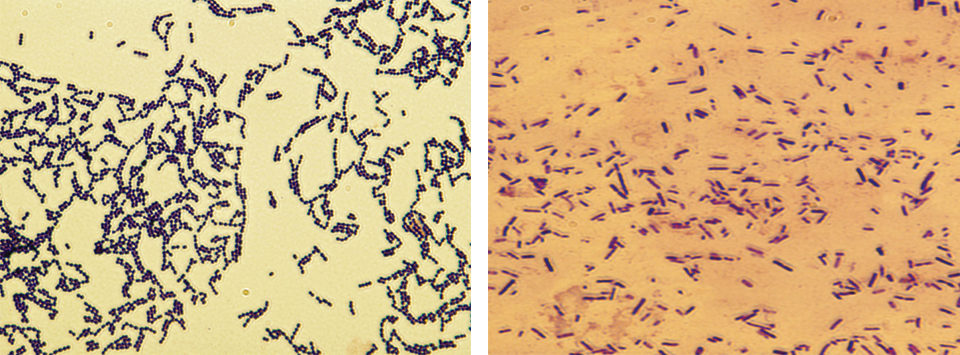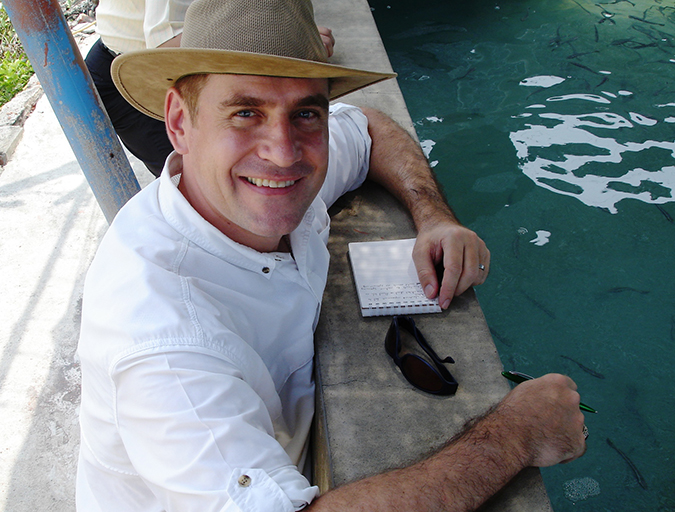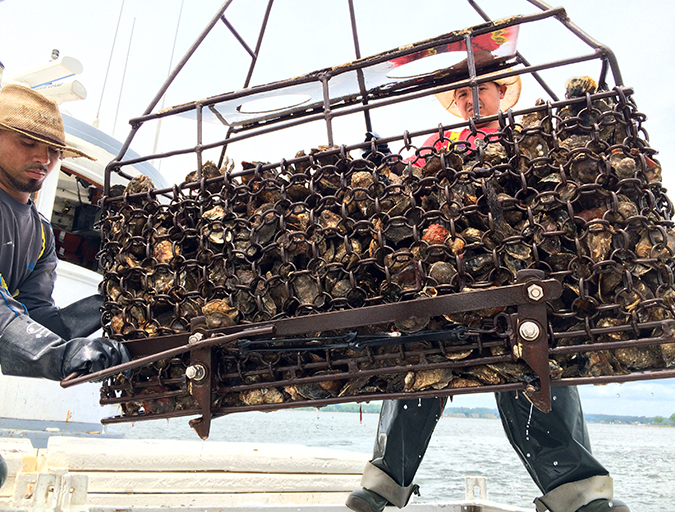With an increase in antibiotic comes greater need for alternative control methods

Aquaculture is the fastest-growing food-production industry in the world. However, diseases are plaguing this sector, causing economic losses estimated to be billions of dollars worldwide. Major bacteria diseases affecting aquaculture include streptococcosis caused by Gram-positive sphere-shaped bacteria such as Streptococcus agalactiae and S. iniae, enteric septicemia caused by Gram-negative rod-shaped bacteria such as Edward-siella tarda and motile aeromonad septicemia caused by Gram-negative bacteria such as Aeromonas hydrophila.
To control fish bacteria diseases, feeding infected fish with approved, antibiotic-medicated feed is a general practice. However, such practice is expensive and usually ineffective, as sick fish do not like to eat. In addition, only three antibiotics are currently approved for use in aquaculture in the United States: oxytetracycline, sulfadimethoxine and florfenicol.
The widespread use of the limited number of antibiotics for treating bacterial diseases in aquaculture has led to the development of antibiotic resistance in many fish pathogens worldwide. Therefore, alternative control methods are urgently needed for the aquaculture industry.
Vaccines
The use of vaccines is an alternative control method to prevent bacteria diseases in aquaculture. The most extensively studied fish vaccines are bacterins consisting of formalin or heat-killed bacteria of pathogenic strains. In addition, recombinant protein vaccines and bacterial lysates have been demonstrated to elicit protection against challenge with virulent bacteria. Furthermore, live attenuated vaccines have been reported to confer significant protection against challenge with virulent bacteria.
To develop effective live bacterial vaccines, a rifampicin-resistant strategy has been successfully used to attenuate E. ictaluri and Flavobacterium columnare. However, it is not clear whether other chemicals could also be used to attenuate bacteria for the purpose of novel vaccine development.
Gossypol, a natural compound derived from the cotton plant, is known to have a mutagenic effect on DNA. Novobiocin and ciprofloxacin are antibiotics. Therefore, the objective of this study was to determine whether gossypol, proflavine hemisulfate, novobiocin or ciprofloxacin was effective in attenuating bacteria for the purpose of vaccine development.
Induction of resistance in bacteria
All bacteria used in the study developed 250- to 800-fold resistance to gossypol rapidly, with an initial selection concentration of 2 µg/mL. However, only 33 percent (6 of 18) and 50 percent (10 of 20) of the Gram-negative and Gram-positive bacteria developed resistance to proflavine hemisulfate, respectively.
The six Gram-negative bacteria developed 16- to 1,000-fold resistance to proflavine hemisulfate, whereas the 10 Gram-positive bacteria developed 20,000- to 80,000-fold resistance to proflavine hemisulfate. When novobiocin was used to select for resistance, Gram-negative bacteria as well as Gram-positive S. agalactiae isolates were able to develop resistance.
Gram-negative bacteria developed 64- to 2,000-fold resistance to novobiocin. Gram-positive S. agalactiae isolates developed 256- to 16,000,000-fold resistance to novobiocin. However, S. iniae was very sensitive to novobiocin. Only two S. iniae isolates developed 256,000- and 2,000,000-fold resistance to novobiocin, respectively. Similarly, when ciprofloxacin was used to select for resistance, all Gram-negative bacteria, as well as a majority of the S. agalactiae isolates, developed resistance, whereas only one S. iniae isolate was able to develop 128-fold resistance to ciprofloxacin.
Bacteria virulence to tilapia, catfish
All gossypol-resistant bacteria were either more virulent to tilapia or slightly less virulent than their respective parents. Of 20 proflavine hemisulfate-resistant bacterial isolates, 18 were found avirulent to tilapia by intraperitoneal injection. Of 18 novobiocin-resistant bacteria isolates, four were avirulent to channel catfish.
Of 13 Gram-positive bacteria that were resistant to novobiocin, three were avirulent to tilapia. Of 12 ciprofloxacin-resistant S. iniae or S. agalactiae, five were found to be avirulent. Of 11 ciprofloxacin-resistant bacterial isolates, three were avirulent to channel catfish.
Vaccinated tilapia, catfish challenged with isolates
All proflavine hemisulfate-resistant isolates failed to provide significant protection to Nile tilapia against challenges with virulent bacteria isolates, with relative survival less than 33 percent. Of nine novobiocin-resistant S. iniae or S. agalactiae isolates tested, two were found to offer 100 percent protection. Of seven ciprofloxacin-resistant S. iniae or S. agalactiae isolates tested, only two provided 88 and 63 percent protection.
Two novobiocin-resistant isolates were able to provide 100 percent protection to channel catfish against challenges with virulent bacteria isolate. Of five ciprofloxacin-resistant A. hydrophila or E. tarda isolates tested, three were found to offer 100 percent protection to channel catfish.
Larger-scale study
When vaccinated catfish were challenged by virulent E. tarda 30305, E. tarda 30305-novobiocin offered 100 percent protection to channel catfish. Similarly, when vaccinated Nile tilapia were challenged by virulent E. tarda 30305, relative percent of survival of vaccinated fish at 14- and 28-dpv was 100 percent and 92 percent, respectively. Cumulative mortalities of E. tarda 30305-novobiocin vaccinated fish at different time points were significantly lower than that of tryptic soy broth sham-vaccinated fish.
For backpassage safety, of all fish exposed to E. tarda 30305-novo vaccine through intraperitoneal injection, no mortality or signs of disease or adverse behavior was observed. No fish died in the backpassage safety studies after exposure to E. tarda 30305-novo.
Perspectives
Four chemicals were used in this study to modify 38 bacterial isolates through a chemical-resistance strategy. All bacteria used in this study were able to develop high resistance to gossypol. However, none of the gossypol-resistant isolate was attenuated. Although the majority of the proflavine hemisulfate-resistant isolates were attenuated, all of them failed to provide significant protection to fish.
Eight novobiocin- or ciprofloxacin- resistant Gram-positive bacteria were found to be attenuated. However, none of them offered protection higher than 70 percent. Of seven attenuated novobiocin- or ciprofloxacin-resistant Gram-negative isolates, only one (novobiocin-resistant E. tarda 30305) was found to be relatively safe and highly efficacious.
When E. tarda 30305-novo-vaccinated Nile tilapia were challenged by virulent E. tarda 30305, relative percent of survival of vaccinated fish at 14 and 28 days post vaccination was 100 percent and 92 percent, respectively. Similarly, E. tarda 30305-novo offered 100 percent protection to channel catfish against challenges with virulent parent isolate E. tarda 30305.
The results suggested that the development of live attenuated bacterial vaccines that are safe and efficacious is feasible, although it is challenging.
(Editor’s Note: This article was originally published in the May/June 2014 print edition of the Global Aquaculture Advocate.)
Now that you've reached the end of the article ...
… please consider supporting GSA’s mission to advance responsible seafood practices through education, advocacy and third-party assurances. The Advocate aims to document the evolution of responsible seafood practices and share the expansive knowledge of our vast network of contributors.
By becoming a Global Seafood Alliance member, you’re ensuring that all of the pre-competitive work we do through member benefits, resources and events can continue. Individual membership costs just $50 a year.
Not a GSA member? Join us.
Authors
-
Dr. Julia W. Pridgeon
Research Molecular Biologist
Aquatic Animal Health Research Unit
United States Department of Agriculture
Agricultural Research Service
990 Wire Road
Auburn, Alabama 36832 USA[118,111,103,46,97,100,115,117,46,115,114,97,64,110,111,101,103,100,105,114,112,46,97,105,108,117,106]
-
Dr. Phillip Klesius
Research Microbiologist (Retired)
Aquatic Animal Health Research Unit
United States Department of Agriculture
Agricultural Research Service
Related Posts

Health & Welfare
A comprehensive look at the Proficiency Test for farmed shrimp
The University of Arizona Aquaculture Pathology Laboratory has carried out the Proficiency Test (PT) since 2005, with 300-plus diagnostic laboratories participating while improving their capabilities in the diagnosis of several shrimp pathogens.

Aquafeeds
Aquaculture Exchange: Lukas Manomaitis, USSEC
The U.S. Soybean Export Council is a huge supporter of aquaculture growth globally, as so many aquafeed formulators rely on U.S. soy to create nutritious diets. The Southeast Asia senior technical advisor for USSEC’s aquaculture program talks about this symbiotic partnership.

Health & Welfare
BC salmon farmers vow sea lice transparency
At the recent GOAL conference, the British Columbia Salmon Farmers Association committed to reveal sea lice counts at farms operating in the province while promising a future without antibiotics, despite struggles with the persistent yellow mouth disease.

Intelligence
As ocean temperatures rise, so too will vibrio outbreaks
A study using a half-century of data has linked climate change and warming sea temperatures with an increase in illnesses from the common vibrio bacteria. Shellfish growers, fighting a particularly virulent strain of Vibrio parahaemolyticus, are changing their harvest protocols.



